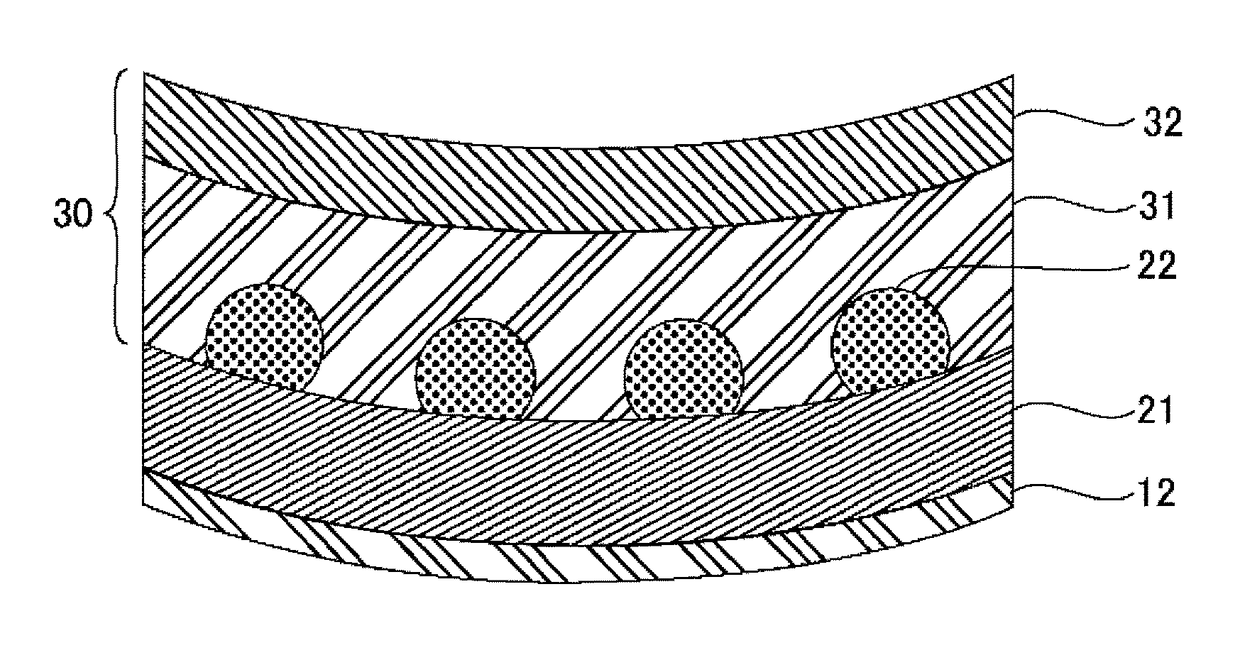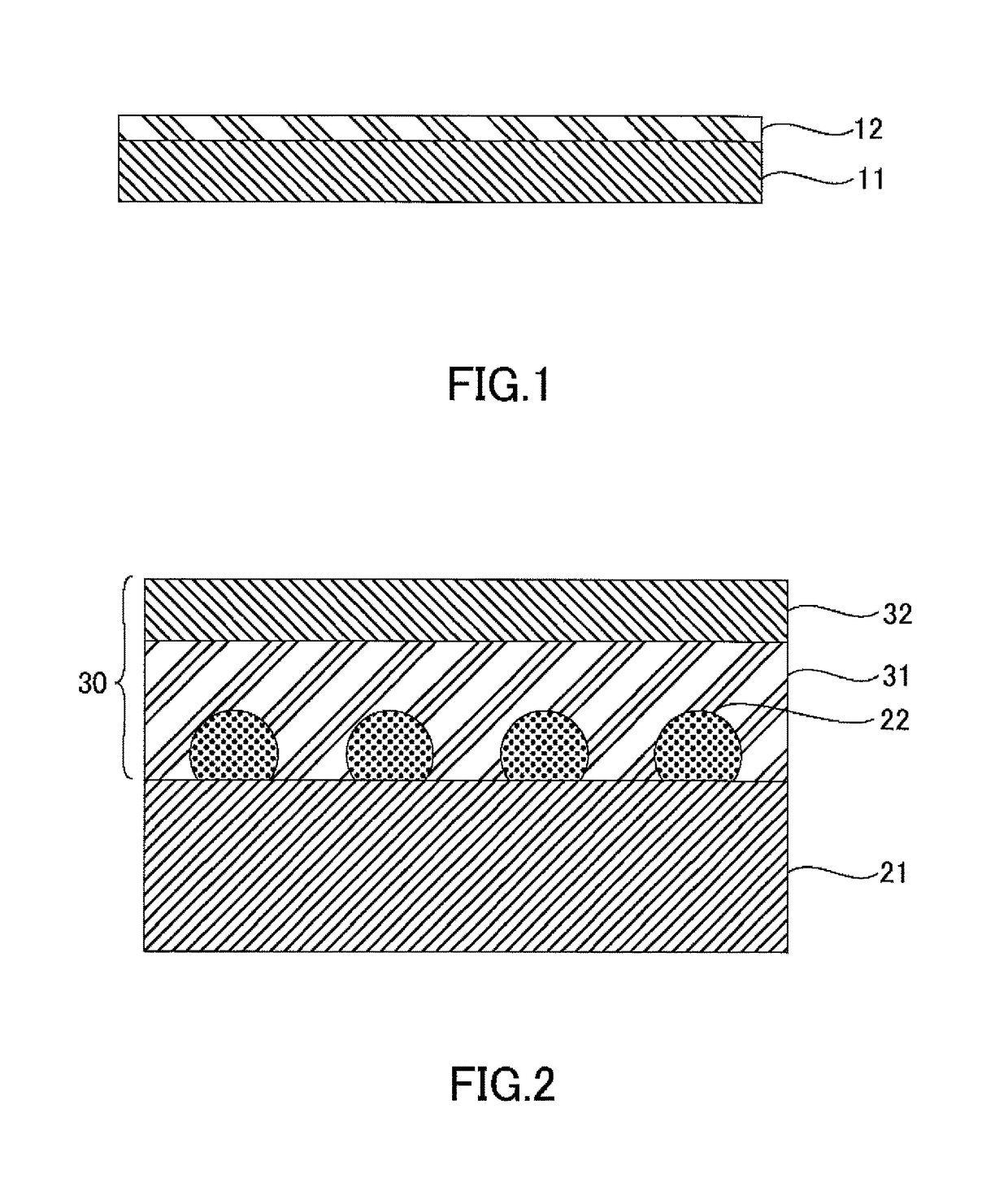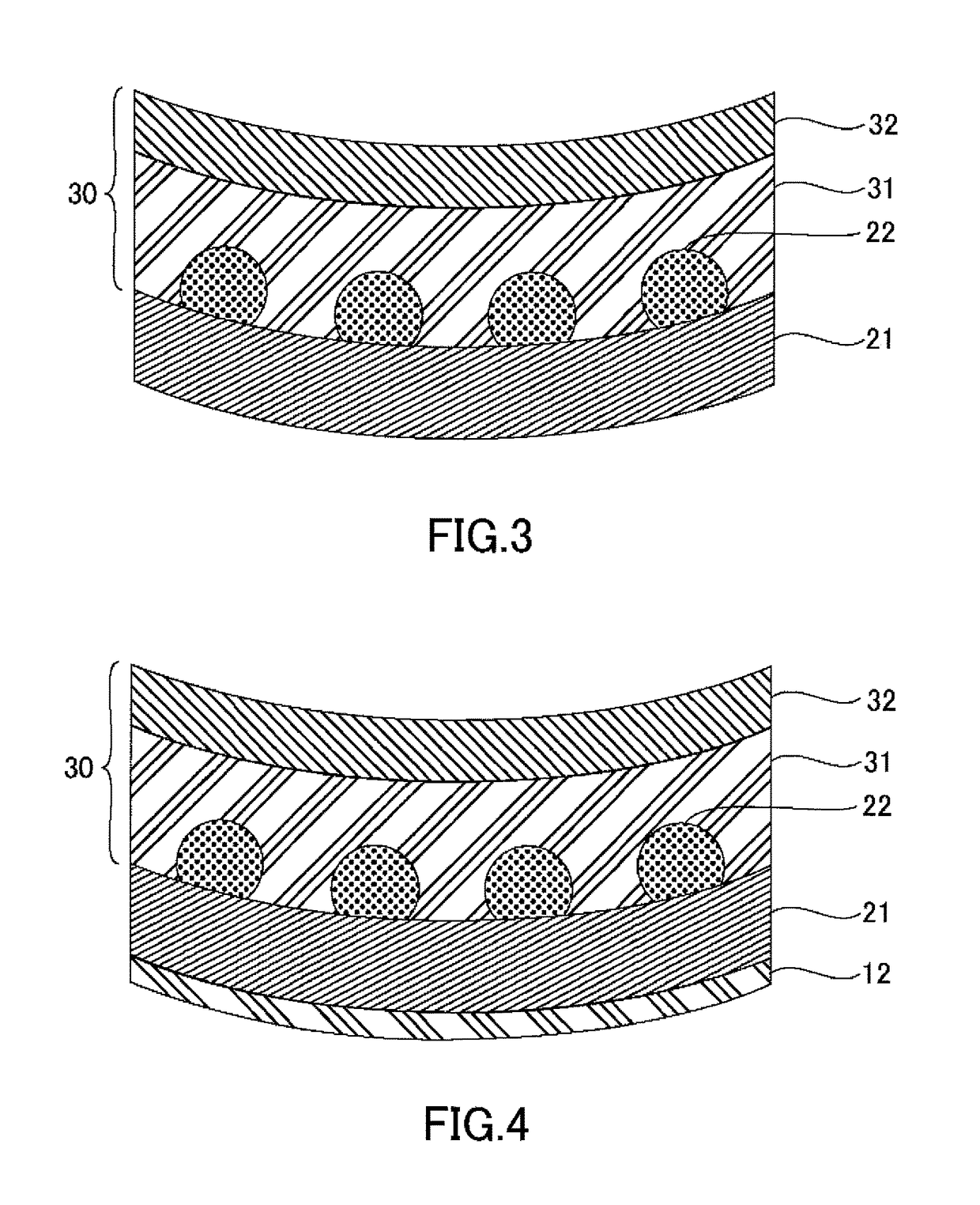Thermosetting adhesive sheet and semiconductor device manufacturing method
a technology of adhesive sheet and semiconductor device, which is applied in the direction of semiconductor device, semiconductor/solid-state device details, electrical apparatus, etc., can solve the problems of reduced transparency, high defect rate, and significant stress of semiconductor wafers, and achieve excellent laser mark visibility and alignment mark readability, and high-quality semiconductor devices
- Summary
- Abstract
- Description
- Claims
- Application Information
AI Technical Summary
Benefits of technology
Problems solved by technology
Method used
Image
Examples
examples
[0090]3. Examples
[0091]Examples according to the present disclosure will now be described.
[0092]3.1 First Examples
[0093]In the first examples, thermosetting adhesive sheets were manufactured and laser mark visibility and alignment mark readability were evaluated.
[0094]Thermosetting Adhesive Sheet Manufacture
[0095]The constituents listed below were blended to prepare resin compositions. These were then applied to release-treated PET (polyethylene terephthalate) by using a bar coater which was then dried in an oven at 80° C. for 3 minutes to manufacture thermosetting adhesive sheets having a thickness of 20 μm (cover release-treated PET (25 μm)) / thermosetting adhesive sheet (20 μm) / base release-treated PET (50 μm).
[0096]FX293: fluorene-type phenoxy resin (manufactured by NIPPON STEEL & SUMIKIN CHEMICAL CO., LTD.)
[0097]SG-80H: acrylic elastomer (manufactured by Nagase ChemteX Corporation)
[0098]4-HBA: 4-hydroxy-butyl acrylate (manufactured by SHIN-NAKAMURA CHEMICAL CO, LTD., (meth)acryl...
example 1
[0111]A thermosetting binder was prepared having 5 pts. mass of a fluorene-type phenoxy resin (FX293), 20 pts. mass of an acrylic-type elastomer (SG-80H), 50 pts. mass of a monofunctional acrylate (4-HBA) and 5 pts. mass of an organic peroxide (PEROYL L). To 80 pts. mass of this thermosetting binder, 50 pts. mass of silica (primary particle diameter: 100 nm), 0.5 pts. mass of carbon black and 2 pts. mass of an acrylic-type coupling agent (KBM-5103) were blended and thermosetting adhesive sheets were manufactured.
[0112]As represented in Table 1, transmittance of the thermosetting adhesive sheets for a wavelength of 1000 nm was 50%. Moreover, the laser mark visibility evaluation was G and the alignment mark readability evaluation was VG.
example 2
[0113]A thermosetting binder was prepared having 5 pts. mass of a fluorene-type phenoxy resin (FX293), 20 pts. mass of an acrylic-type elastomer (SG-80H), 50 pts. mass of an alicyclic epoxy resin (CEL-2021) and 5 pts. mass of a phenol novolac (TD-2131) as a curing agent. To 80 pts. mass of this thermosetting binder, 5 pts. mass of a DBU-type tetraphenylborate salt (U-CAT 5002) as an auxiliary curing agent, 50 pts. mass of silica (primary particle diameter: 100 nm), 0.5 pts. mass of carbon black and 2 pts. mass of an acrylic-type coupling agent (KBM-403) were blended and thermosetting adhesive sheets were manufactured.
[0114]As represented in Table 1, transmittance of the thermosetting adhesive sheets for a wavelength of 1000 nm was 50%. Moreover, the laser mark visibility evaluation was G and the alignment mark readability evaluation was VG.
PUM
| Property | Measurement | Unit |
|---|---|---|
| average primary particle diameter | aaaaa | aaaaa |
| one-minute half-life temperature | aaaaa | aaaaa |
| average primary particle diameter | aaaaa | aaaaa |
Abstract
Description
Claims
Application Information
 Login to View More
Login to View More - R&D
- Intellectual Property
- Life Sciences
- Materials
- Tech Scout
- Unparalleled Data Quality
- Higher Quality Content
- 60% Fewer Hallucinations
Browse by: Latest US Patents, China's latest patents, Technical Efficacy Thesaurus, Application Domain, Technology Topic, Popular Technical Reports.
© 2025 PatSnap. All rights reserved.Legal|Privacy policy|Modern Slavery Act Transparency Statement|Sitemap|About US| Contact US: help@patsnap.com



